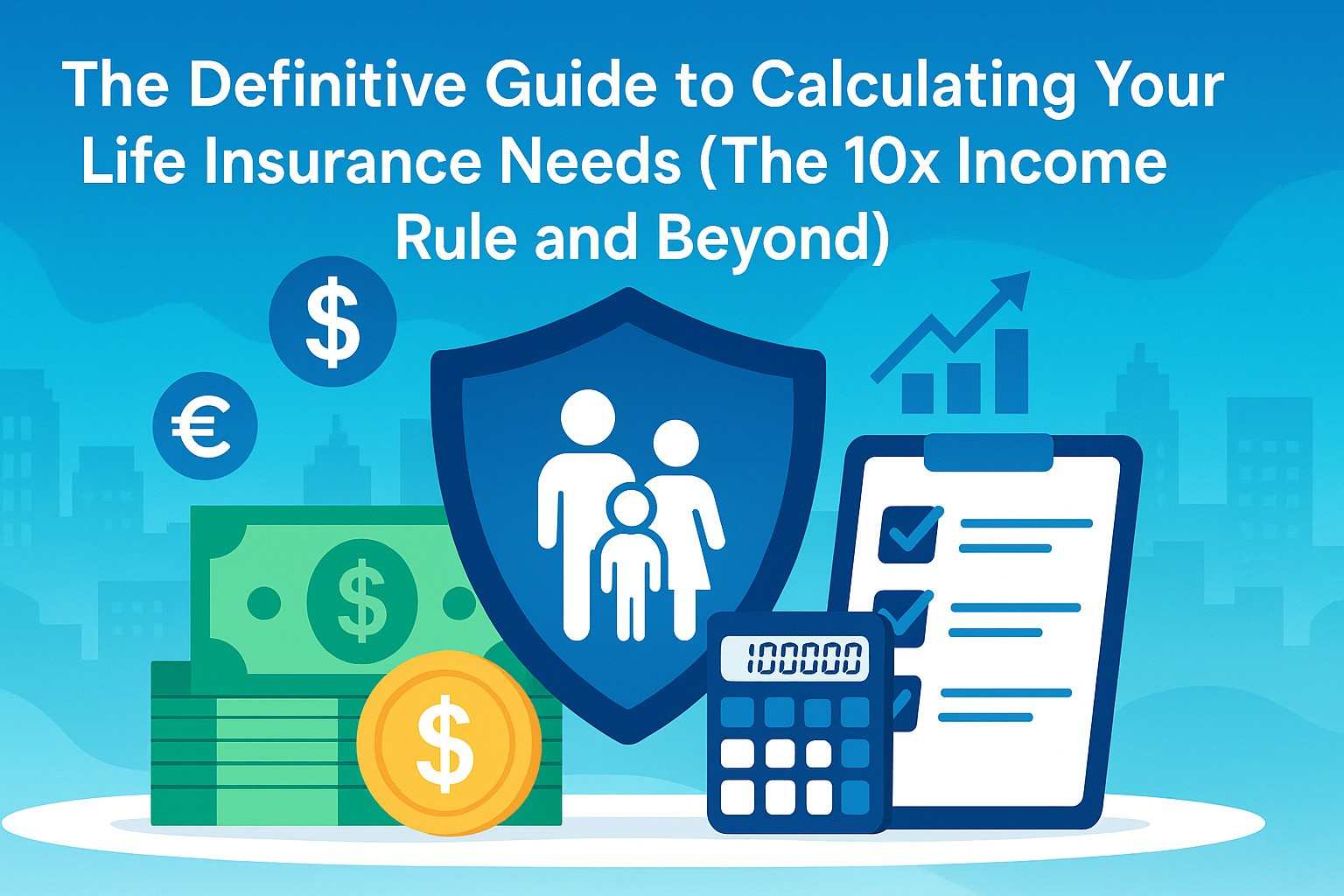How much is enough? How much is too much?
It’s the one question that stops most people cold when they start thinking about life insurance. The sheer number of options and opinions can be paralyzing. Some agents will give you a massive, intimidating number, while online calculators spit out something else entirely. Who do you trust?
Let’s be real. Nobody
likes thinking about this stuff. But getting this number right is one of the most important financial decisions you will ever make for your family.
So let’s clear the fog. We’re going to ignore the jargon and break this down into a couple of simple, common-sense methods. This is your definitive, no-nonsense guide to finding your number.
The Starting Point: The “10x Income” Rule of Thumb
You’ve probably heard of this one. It’s the “back-of-the-napkin” calculation of the insurance world.
The logic is simple: a lump sum of 10 times your annual salary
should give your family a big enough cushion to invest, draw from, and maintain their lifestyle for a good while. If you make $80,000 a year, you’d get an $800,000 policy. Simple, right?
It’s a decent starting point. Better than a wild guess.
But here’s the problem with “quick and dirty”: life is messy. The 10x rule is a blunt instrument in a world that needs precision. It completely ignores your biggest debts (like your mortgage), the future cost of your kids’ college education, your spouse’s income, or the savings you
already have. For most people, it’s either way too much or, more often, dangerously not enough.
A Smarter Approach: The DIME Method
Okay, so if the 10x rule is too simple, let’s get a bit more detailed. We’ll use a simple framework that forces you to look at the real numbers. It’s called the DIME method.
Just remember the four letters:
D. I. M. E.
D is for Debt. First, add it all up. Every last penny you owe. Don’t estimate. Look at your statements and get the real numbers.
- Your Mortgage Balance
- Car Loans
- Student Loans
- Credit Card Debt
- Any other personal loans
Your life insurance should, at a minimum, wipe your family’s debt slate clean.
I is for Income Replacement. This is the big one. How many years of your income would your family need to replace to get back on their feet? A common starting point is 10 years, especially if your children are young.
- Your Annual Income x Number of Years You Want to Replace = Your “I” Number.
- Example: $80,000/year x 10 years = $800,000.
M is for Mortgage. Yes, this was already in the “Debt” section, but it’s so important that it’s worth thinking about twice. For most people, the number one goal of life insurance is to make sure their family can stay in the family home, no matter what. Paying off the mortgage is a huge part of that peace of mind. Make sure your “D” number fully covers it.
E is for Education. For any parent, this is a massive piece of the puzzle. It’s a promise you want to keep.
- How many kids do you have?
- Do you plan for them to go to a public or private university?
Look up the
future estimated cost of a four-year degree. Don’t use today’s numbers. A good starting point for a future public university degree is often estimated at $150,000 per child, and $250,000+ for a private one. Add it all up.
Your basic number is D + I + M + E. Easy.
The Final Polish: Don’t Forget These Critical Factors
The DIME method gets you about 90% of the way there. This is where we go from a good estimate to a
great one by fine-tuning the number.
Subtract Your Assets. You’re not starting from zero. Your family would have your existing savings to use. So, take your DIME total and subtract your liquid assets.
- Your current savings and non-retirement investment accounts.
- Any life insurance you already have through your job.
Add Final Expenses. You need to account for the costs associated with death. Funerals are expensive, and there can be medical bills and other estate-settling costs. It’s wise to add a lump sum of
$15,000 to $25,000 for this. This is the “etcetera” fund that covers the immediate and unexpected.
Let’s See It In Action
Let’s look at Mark. He’s 35, makes $100,000/year, and has a wife and two young kids.
- 10x Rule says: $1,000,000.
Now let’s use the DIME method + Final Polish:
- D (Debt): $250,000 mortgage + $20,000 in car/student loans = $270,000
- I (Income): $100,000 x 15 years (until kids are grown) = $1,500,000
- M (Mortgage): Already covered in Debt.
- E (Education): $150,000 for each of his two kids = $300,000
- D+I+M+E Subtotal: $2,070,000
Now let’s polish it:
- Subtract Assets: Mark has $50,000 in savings and $100,000 of insurance through work. (-$150,000)
- Add Final Expenses: Let’s add $25,000.
- Mark’s Real Need: $2,070,000 – $150,000 + $25,000 = $1,945,000
As you can see, the quick 10x rule left him nearly a million dollars short.
Conclusion: It’s Not Just a Number, It’s a Plan
We’ve gone from a wild guess to a well-reasoned, personalized estimate.
At the end of the day, the right amount of life insurance isn’t a math problem—it’s a peace-of-mind problem. The number you land on should be the one that lets you sleep at night, knowing that if the worst happens, the people you love will be financially secure.
Don’t just guess. Do the math. Your family is worth the effort.











